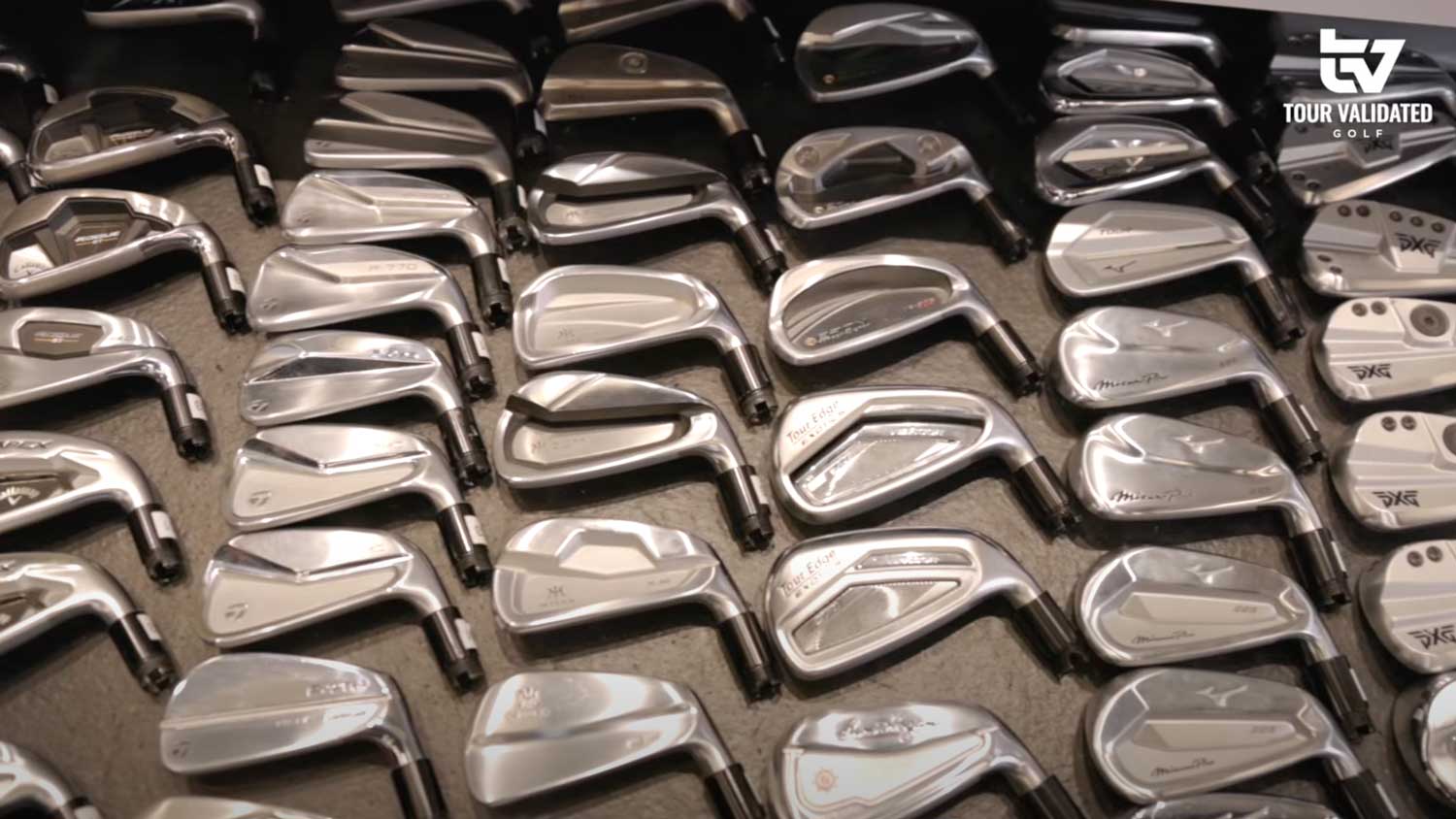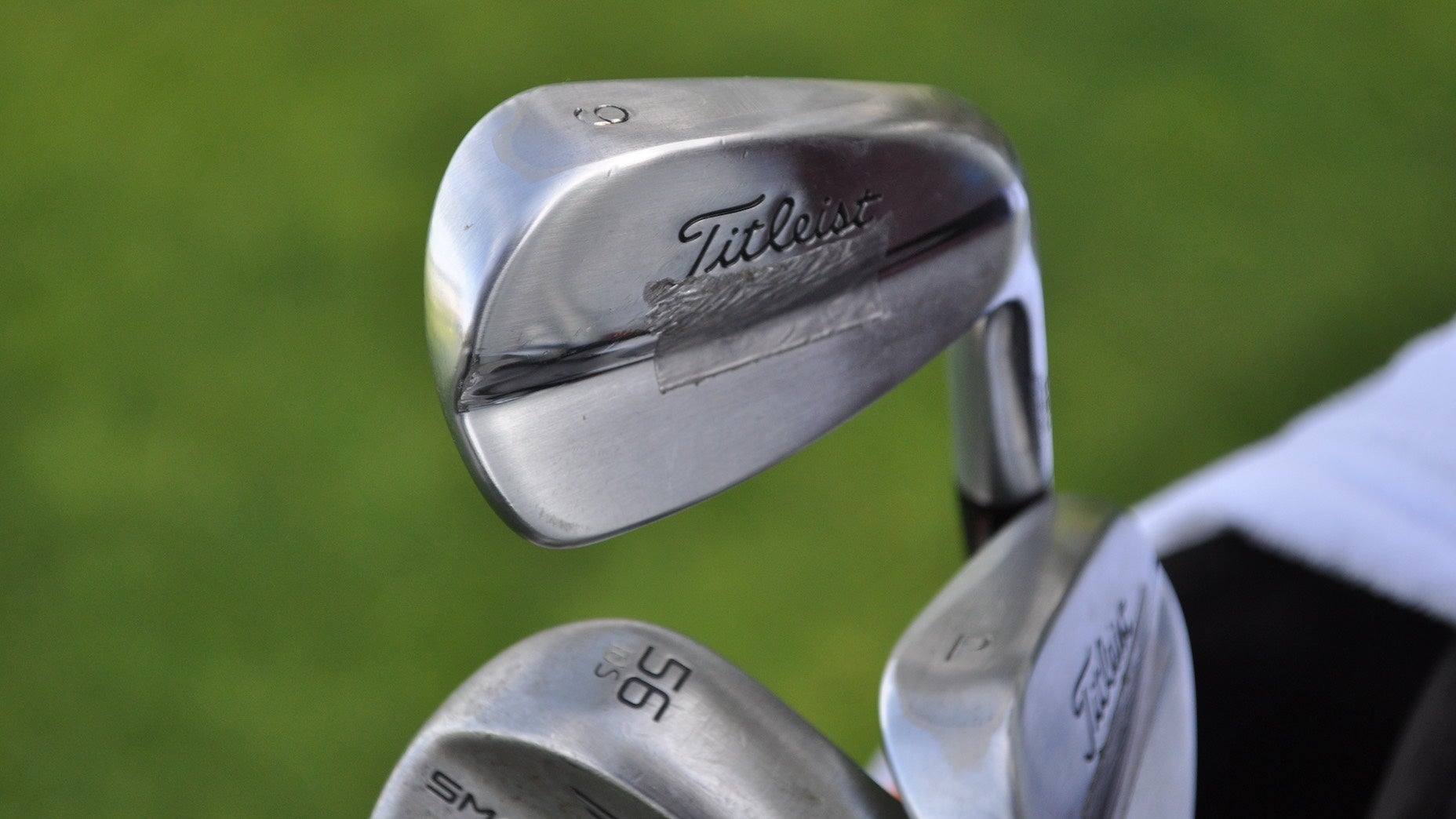
Ever wonder why some of your buddies can crank their irons a club or two or farther than you can? Sure, technique, strength and flexibility may have something to do with it, but sometimes it’s your clubs that are fooling you into thinking your pals know something you don’t.
For example, your 5-iron has what’s called a static loft, which is the angle of the clubface when the shaft is oriented vertically and the sole is flat on the ground. But here’s the kicker: Another 5-iron in a different model may, in fact, have a numeral 5 stamped on the bottom, but it’s possible it could have a static loft that is several degrees stronger or weaker than yours.
This variance from one iron to another is because there’s no industry standard for how lofts are determined, nor is there any convention for how irons are numbered. Your 5-iron may resemble a 6- or 7-iron in a different model, or vice versa.
In the latest episode of Tour Validated, hosts DJ Lantz and Kris McCormack, VP of tour and education at True Spec Golf, test several iron models to illustrate just how much disparity there is in today’s lofts. Check it out above.
All of our market picks are independently selected and curated by the editorial team. If you buy a linked product, GOLF.COM may earn a fee. Pricing may vary.
Need new irons? Of course you do! You can browse the latest and greatest models at Fairway Jockey.







